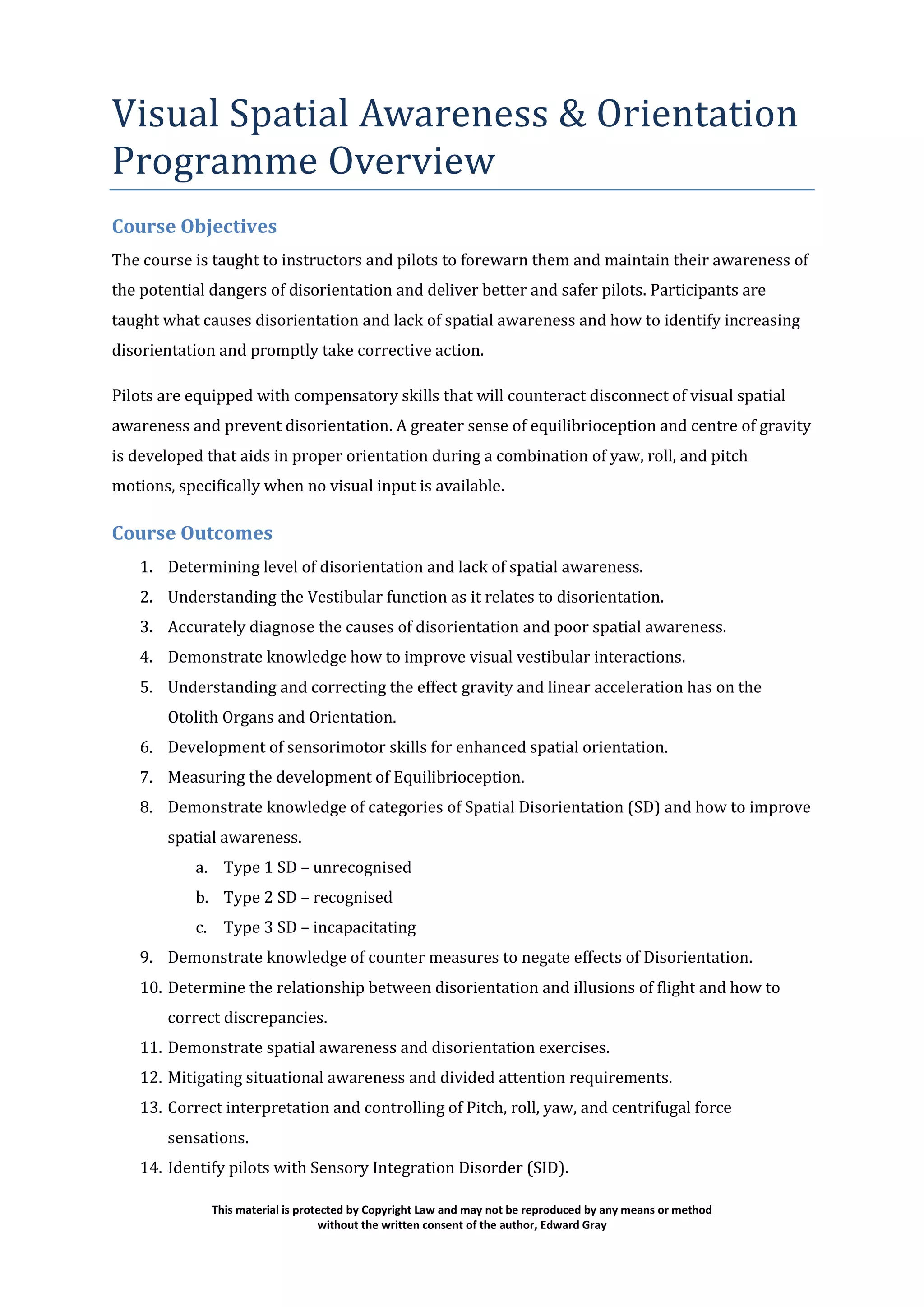This document outlines the objectives, content, structure, and learning resources for a course aimed at instructing pilots and instructors about spatial disorientation and how to identify and correct it. The course covers topics like the causes of disorientation, developing compensatory skills, and exercises to improve awareness. It is taught over 185 hours for instructors and 40-50 hours for pilots using lectures, demonstrations, practical training, and requiring therapists to treat 5 patients experiencing disorientation.

